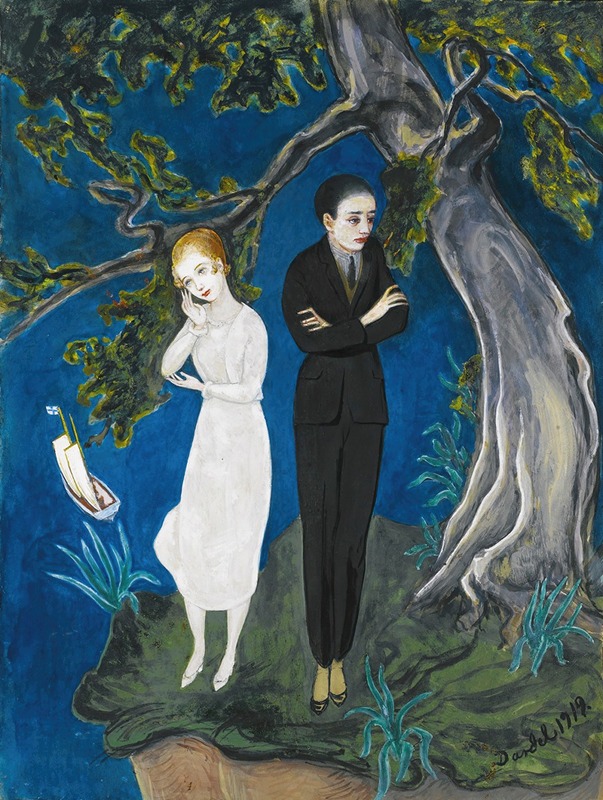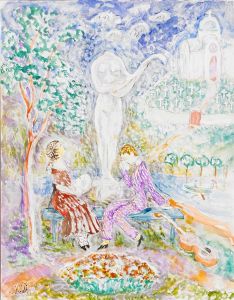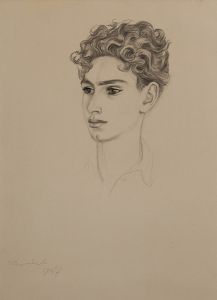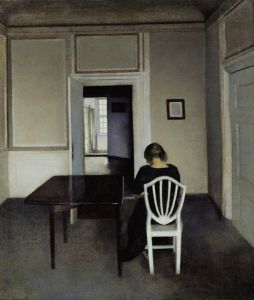
Young Man In Black, Girl In White
A hand-painted replica of Nils Dardel’s masterpiece Young Man In Black, Girl In White, meticulously crafted by professional artists to capture the true essence of the original. Each piece is created with museum-quality canvas and rare mineral pigments, carefully painted by experienced artists with delicate brushstrokes and rich, layered colors to perfectly recreate the texture of the original artwork. Unlike machine-printed reproductions, this hand-painted version brings the painting to life, infused with the artist’s emotions and skill in every stroke. Whether for personal collection or home decoration, it instantly elevates the artistic atmosphere of any space.
Nils Dardel was a Swedish painter known for his distinctive style and contribution to modern art in the early 20th century. One of his notable works is "Young Man In Black, Girl In White," which reflects his unique approach to portraiture and narrative art. Dardel's work often explored themes of existentialism, identity, and the complexities of human relationships, and this painting is no exception.
"Youth Man In Black, Girl In White" is a striking example of Dardel's ability to capture the essence of his subjects while imbuing the scene with a sense of mystery and emotional depth. The painting features two figures, a young man dressed in black and a girl in white, set against a backdrop that is both simple and evocative. The contrast between the two figures' clothing colors is a deliberate choice by Dardel, highlighting the differences and potential tensions between them.
Dardel's use of color and form in this painting is characteristic of his broader body of work. He often employed bold colors and sharp contrasts to create visual interest and convey deeper meanings. In "Young Man In Black, Girl In White," the stark contrast between the black and white attire of the figures may symbolize themes of duality, such as life and death, innocence and experience, or presence and absence. This duality is a recurring motif in Dardel's art, reflecting his fascination with the complexities of human existence.
The composition of the painting is carefully balanced, with the two figures positioned in a way that suggests both connection and separation. The young man and the girl are depicted with a sense of individuality, yet their juxtaposition invites viewers to consider their relationship and the narrative that might exist between them. Dardel's skillful use of line and form ensures that the figures are both distinct and harmonious within the composition.
Nils Dardel's work was influenced by various art movements of his time, including Symbolism and Expressionism. His paintings often contain elements of fantasy and surrealism, inviting viewers to engage with the work on both an emotional and intellectual level. "Young Man In Black, Girl In White" exemplifies this approach, as it encourages viewers to ponder the story behind the figures and the emotions they evoke.
Dardel's career was marked by a constant exploration of new themes and techniques, and his work remains influential in the world of modern art. He was part of the Swedish avant-garde and spent significant time in Paris, where he was exposed to a vibrant artistic community. This exposure helped shape his artistic vision and contributed to the development of his distinctive style.
"Youth Man In Black, Girl In White" is a testament to Dardel's ability to blend traditional portraiture with modernist sensibilities. The painting's enduring appeal lies in its ability to provoke thought and elicit emotional responses from viewers. Through his masterful use of color, composition, and narrative, Dardel created a work that continues to captivate audiences and inspire discussions about the nature of art and the human condition.
In summary, "Young Man In Black, Girl In White" by Nils Dardel is a compelling example of the artist's innovative approach to painting. It reflects his interest in exploring complex themes through the use of color, form, and narrative, making it a significant piece in the study of early 20th-century modern art.
















